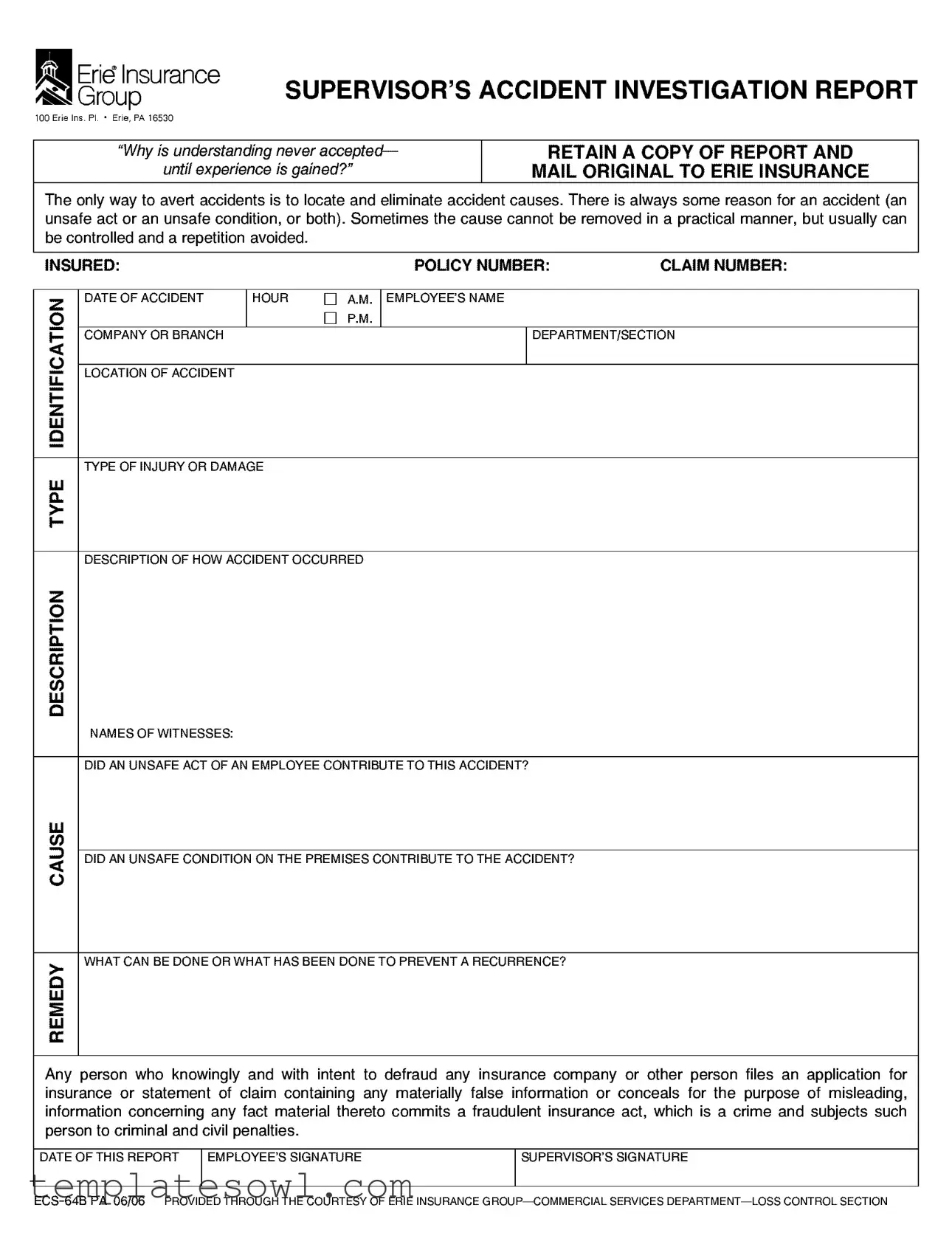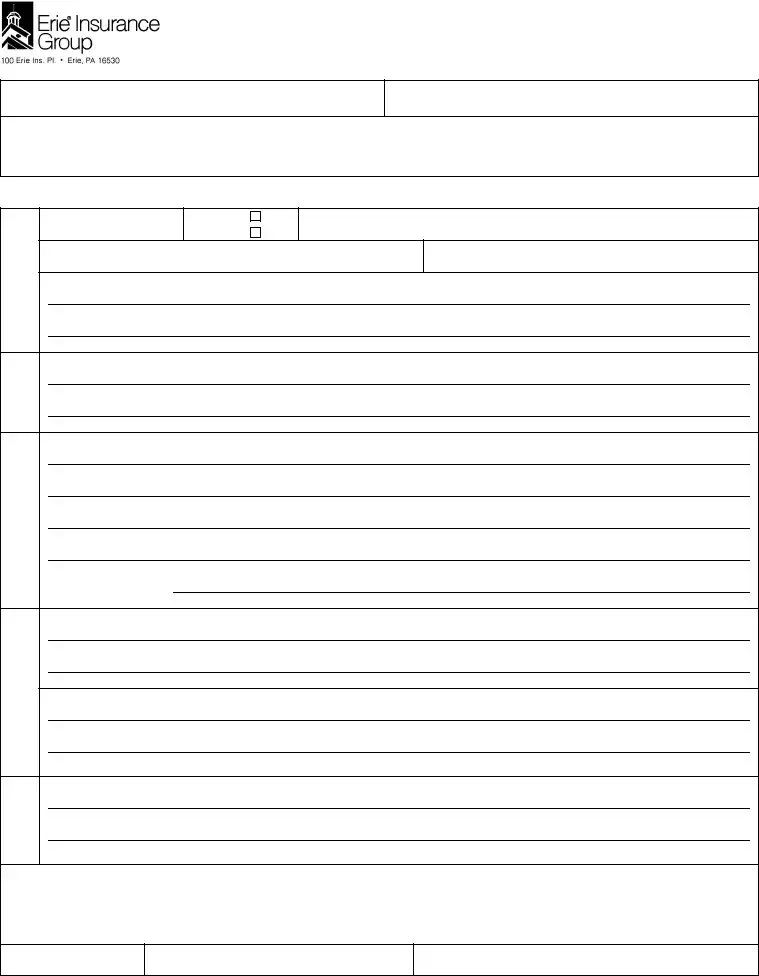What is the purpose of the Investigation form?
The Investigation form is designed to document details surrounding workplace accidents. By capturing information such as the date, time, location, and circumstances of the accident, it helps identify potential unsafe acts or conditions that may have contributed to the incident. This process is essential for understanding the causes of accidents, which can ultimately help prevent future occurrences. Keeping a record of these details can also support any insurance claims related to the incident.
Who needs to complete the Investigation form?
The Investigation form should be completed by the supervisor responsible for overseeing the area where the accident took place. This individual is typically best positioned to provide accurate details surrounding the accident. Additionally, they may gather input from the injured employee, witnesses, and other relevant parties to ensure a comprehensive account is recorded. While the supervisor is primarily accountable, the cooperation of all parties involved is important for a thorough investigation.
What information is required on the Investigation form?
Essential information includes the insured party’s name, policy number, claim number, and the date and hour when the accident occurred. The form also asks for details such as the employee’s name, department, and type of injury or damage incurred. Furthermore, a description of how the accident occurred, names of witnesses, and any unsafe acts or conditions contributing to the accident must be noted. Finally, the form seeks to outline measures that can be taken or have been taken to prevent reoccurrence.
What are the consequences of providing false information on the form?
Submitting inaccurate information with the intent to mislead can lead to serious consequences. If someone knowingly includes false information or conceals relevant facts when filing a claim, they may be committing a fraudulent insurance act. This can result in criminal charges and civil penalties, which highlight the importance of accuracy and honesty when completing the Investigation form. Maintaining integrity in all aspects of the reporting process is essential to prevent legal ramifications.

